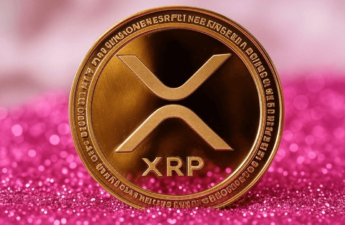The rise of digital currencies has transformed global finance but poses challenges for regulators balancing innovation, market integrity, and consumer protection. The EU’s MiCA regulation is a key step in addressing these issues, making it essential for Web3 projects in the EU, UK, and USA to understand its impact for compliance and strategy.
Understanding MiCA: A Comprehensive Framework
MiCA is the EU’s first unified regulatory framework for digital assets. Adopted in 2023, it aims to harmonize the regulatory landscape across member states, filling gaps not covered by existing EU financial legislation. By creating clear rules for crypto-asset issuers and service providers, MiCA sets the stage for increased trust in the sector while supporting innovation.
The regulation applies to a wide range of participants, including issuers of crypto-assets, trading platforms, and custodial service providers. It categorizes crypto-assets into three main types:
Asset-Referenced Tokens (ARTs): Stable tokens pegged to multiple assets, like currencies or commodities.
Electronic Money Tokens (EMTs): Stable tokens tied to a single fiat currency.
Other Crypto-Assets: A catch-all category for assets not already covered by EU law.
Why Is Crypto Being Regulated?
The cryptocurrency regulations are driven by several key factors:
Consumer Protection: The decentralized and often anonymous nature of cryptocurrencies can expose consumers to fraud, scams, and significant financial losses. Regulation aims to safeguard consumers by ensuring transparency and accountability within the crypto market.
Market Integrity: Without oversight, crypto trading platforms are susceptible to manipulation, insider trading, and other illicit activities. Regulatory frameworks seek to uphold fair trading practices and maintain investor confidence.
Financial Stability: The growing integration of crypto-assets into the broader financial system poses potential risks to financial institutions. Regulation helps mitigate systemic risks that could arise from the volatility and interconnectedness of the crypto sector.
Anti-Money Laundering (AML) and Counter-Terrorist Financing (CTF): Cryptocurrencies can be exploited for money laundering and financing illegal activities due to their pseudonymous nature. Regulatory measures aim to prevent such misuse by enforcing AML and CTF standards.
Regulatory Issues of Cryptocurrency
Despite the necessity of crypto regulation, several challenges persist:
Jurisdictional Differences: The global nature of cryptocurrencies complicates regulation, as laws vary significantly across countries, leading to regulatory arbitrage and enforcement difficulties.
Classification Challenges: Determining whether a crypto-asset is a security, commodity, or currency affects its regulatory treatment. This classification can be ambiguous, leading to legal uncertainties under federal securities laws.
Technological Complexity: The rapid pace of technological innovation in the crypto space often outstrips the development of regulatory frameworks, making it challenging for regulators to keep pace.
Balancing Innovation and Regulation: Overly stringent regulations may stifle innovation, while too lenient an approach could fail to protect consumers adequately. Striking the right balance is a persistent issue for policymakers.
Opportunities and Challenges for Web3 Projects in the EU
For Web3 projects operating within the EU, MiCA presents a double-edged sword. On one hand, it brings much-needed legal clarity, fostering confidence among developers, investors, and consumers. On the other hand, its strict compliance requirements could pose challenges, particularly for smaller projects.
Opportunities
Legal Certainty: The regulation reduces ambiguity by clearly defining the rules for crypto-assets, making it easier for projects to plan and operate.
Market Access: MiCA harmonizes regulations across 27 EU member states, allowing compliant projects to scale across the entire bloc without additional legal hurdles.
Challenges
Compliance Costs: Meeting MiCA’s transparency, disclosure, and governance standards could increase operational expenses.
Resource Strain: Smaller Web3 startups may struggle to allocate resources toward fulfilling MiCA’s requirements, potentially limiting innovation.
The UK Perspective: A Different Path
Post-Brexit, the UK has opted for a distinct regulatory path, focusing on anti-money laundering (AML) requirements and crafting its broader crypto framework. While the UK’s approach offers flexibility, it also creates a fragmented regulatory environment for Web3 projects operating in both regions.
Key Differences
MiCA’s Uniformity vs. UK’s Fragmentation: MiCA offers a single set of rules, while the UK’s regulations remain piecemeal and evolving.
Consumer Focus: Both jurisdictions emphasize consumer protection, but MiCA’s approach is more comprehensive in scope.
Implications for Web3 Projects
For UK-based Web3 projects, adapting to MiCA is essential for accessing EU markets. However, the divergence in regulatory frameworks might add complexity, particularly for businesses operating cross-border.
The USA: A Regulatory Patchwork
Across the Atlantic, the USA faces its own challenges in regulating crypto-assets. Unlike MiCA’s cohesive framework, the U.S. regulatory environment is fragmented, with multiple agencies, including the SEC and CFTC, overseeing different aspects of crypto-assets. This patchwork approach has led to regulatory uncertainty, complicating operations for crypto investment firms and other players in the market.
Comparative Analysis
Clarity: MiCA’s unified approach contrasts with the U.S.’s overlapping jurisdictions, providing more predictability for businesses.
Market Entry: U.S.-based projects targeting the EU must align with MiCA’s requirements, which could necessitate operational adjustments.
The Global Influence of MiCA
MiCA sets a potential benchmark for digital asset regulation worldwide. As other jurisdictions observe its implementation, the EU’s framework could inspire similar efforts, creating opportunities for interoperability and global standardization.
8 key areas to review your WEB3 marketing!
Get the must-have checklist now!
Practical Strategies for Web3 Projects
Whether based in the EU, UK, or USA, Web3 businesses need a proactive approach to navigate MiCA and its implications.
For EU-Based Projects
Start Compliance Early: Begin preparations for MiCA compliance now, particularly as key provisions will be implemented by mid and late 2024. Early action minimizes last-minute disruptions and operational risks.
Engage Regulators: Proactively communicate with regulatory authorities in your region. Building relationships with regulators can help clarify uncertainties and ensure smoother compliance processes.
For UK-Based Projects
Monitor Developments: Stay updated on the evolving regulatory landscape in both the UK and the EU. Any alignment or divergence between the two frameworks will directly impact operations.
Evaluate Cross-Border Strategies: If your project targets EU consumers, assessing the operational impact of dual compliance is essential to ensure seamless market entry.
For US-Based Projects
Understand EU Compliance Requirements: Familiarize yourself with MiCA’s framework, particularly its rules on transparency, governance, and market conduct. Compliance will be necessary to access EU markets.
Seek Expert Legal Counsel: Given the complexity of adapting to an entirely new regulatory regime, consulting legal experts with expertise in EU crypto laws will help navigate the transition effectively.
How Changelly’s APIs Help Businesses Thrive
Understanding and adapting to cryptocurrency regulations can be a complex process, but Changelly’s suite of B2B APIs makes it simpler. Trusted by over 500 industry leaders like Ledger, Trezor, and Exodus, Changelly has built a reputation for excellence, winning awards such as the Outstanding Blockchain Technology Provider and Outstanding Crypto Exchange API Provider in 2024.
Streamlined Compliance and Security
Changelly’s Smart KYC system simplifies regulatory compliance, enabling businesses to onboard users efficiently while adhering to global standards. This automation enhances security without compromising user experience, giving businesses the tools they need to scale confidently in a regulated market.
Comprehensive and Cost-Effective Solutions
Changelly’s Crypto Exchange API: Our exchange API is a trusted solution for offering seamless crypto-to-crypto exchanges with over 700 digital currencies, saving businesses from building their own infrastructure.
Changelly’s Crypto Purchase API: Our fiat-to-crypto API simplifies fiat-to-crypto transactions, supporting over 100 fiat currencies and driving accessibility for diverse user bases.
Changelly PAY: Our crypto payment gateway empowers businesses to accept cryptocurrency payments securely, tapping into the growing demand for digital payment solutions.
Why Businesses Choose Changelly
With a focus on speed, security, and collaboration, Changelly offers competitive advantages:
Rapid Integration: Businesses can reduce time-to-market and scale quickly with our developer-friendly APIs.
Cost Efficiency: Partners save on the high costs of building and maintaining exchange infrastructure.
Collaborative Growth: Tailored marketing and onboarding support ensure long-term success.
Changelly isn’t just a service provider; it’s a growth partner. By offering robust tools and ongoing support, we empower businesses to navigate challenges, remain compliant, and seize opportunities in the evolving crypto landscape.
Conclusion: MiCA as a Catalyst for a Safer, More Transparent Crypto Ecosystem
The Markets in Crypto-Assets Regulation (MiCA) marks a turning point for the crypto industry, particularly for projects operating in or targeting the European market. Its clear guidelines bring much-needed regulatory certainty, enabling the sector to mature responsibly while protecting consumers and fostering market integrity.
By establishing a robust framework for cryptocurrency exchanges and other participants, MiCA also provides clear rules for stablecoins and other tokens tied to an underlying asset. For Web3 projects, adapting to MiCA’s provisions will require strategic planning, resource allocation, and proactive engagement with regulators.
Globally, MiCA could inspire similar frameworks, signaling a new era of comprehensive regulation for cryptocurrencies and digital assets. As other jurisdictions observe and potentially adopt comparable measures, projects that align with MiCA now will likely gain a competitive advantage in the long run.
By approaching MiCA as an opportunity rather than a hurdle, Web3 businesses can position themselves as leaders in an increasingly regulated digital economy. The journey to compliance may be complex, but the rewards — a more transparent, secure, and innovative crypto ecosystem—are well worth the effort.
Disclaimer: Please note that the contents of this article are not financial or investing advice. The information provided in this article is the author’s opinion only and should not be considered as offering trading or investing recommendations. We do not make any warranties about the completeness, reliability and accuracy of this information. The cryptocurrency market suffers from high volatility and occasional arbitrary movements. Any investor, trader, or regular crypto users should research multiple viewpoints and be familiar with all local regulations before committing to an investment.


